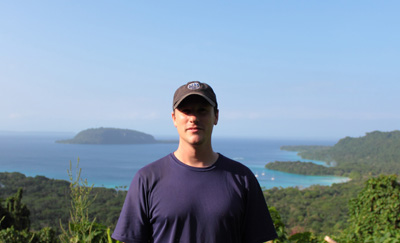Reconstructing Rainfall Variability
in the Tropical Pacific using Stalagmites
By:
Jud Partin
UTIG
| When: | Friday, November 9, 2012, 10:30 a.m. to 11:30 a.m. Join us for coffee beginning at 10:00 a.m. |
| Where: | Seminar Conference Room, 10100 Burnet Road, Bldg 196-ROC, Austin, Texas 78758 |
| Host: | Nick Hayman, UTIG |
Click for a Live Broadcast.

Abstract
I will present cave stalagmite stable oxygen isotope records (δ18O) from the Western Pacific Warm Pool, a major source of heat and water vapor to the atmosphere. Stalagmite δ18O records from Borneo and the Philippines spanning the last 15 kyrs help map the spatial extent, and offer clues about the origin of, the abrupt climate change event known as the Younger Dryas.
The stalagmite records also provide insight as to how precessional insolation forcing can alter rainfall associated with the Asian monsoon. A high resolution, sub-annually resolved δ18O record for the last 450 years from Vanuatu, a location whose climate is heavily influenced by variability in the South Pacific Convergence Zone, is dominated by changes in stalagmite δ18O that are large (~1%), repetitious (~50 year periodicity), and generally abrupt (within 5-10 years).
These isotopic changes imply abrupt rainfall changes of up to ~1.6m/wet season; changes that can be ~3 times larger than the shift in 1976 commonly associated with a change in phase of the Pacific Decadal Oscillation.




